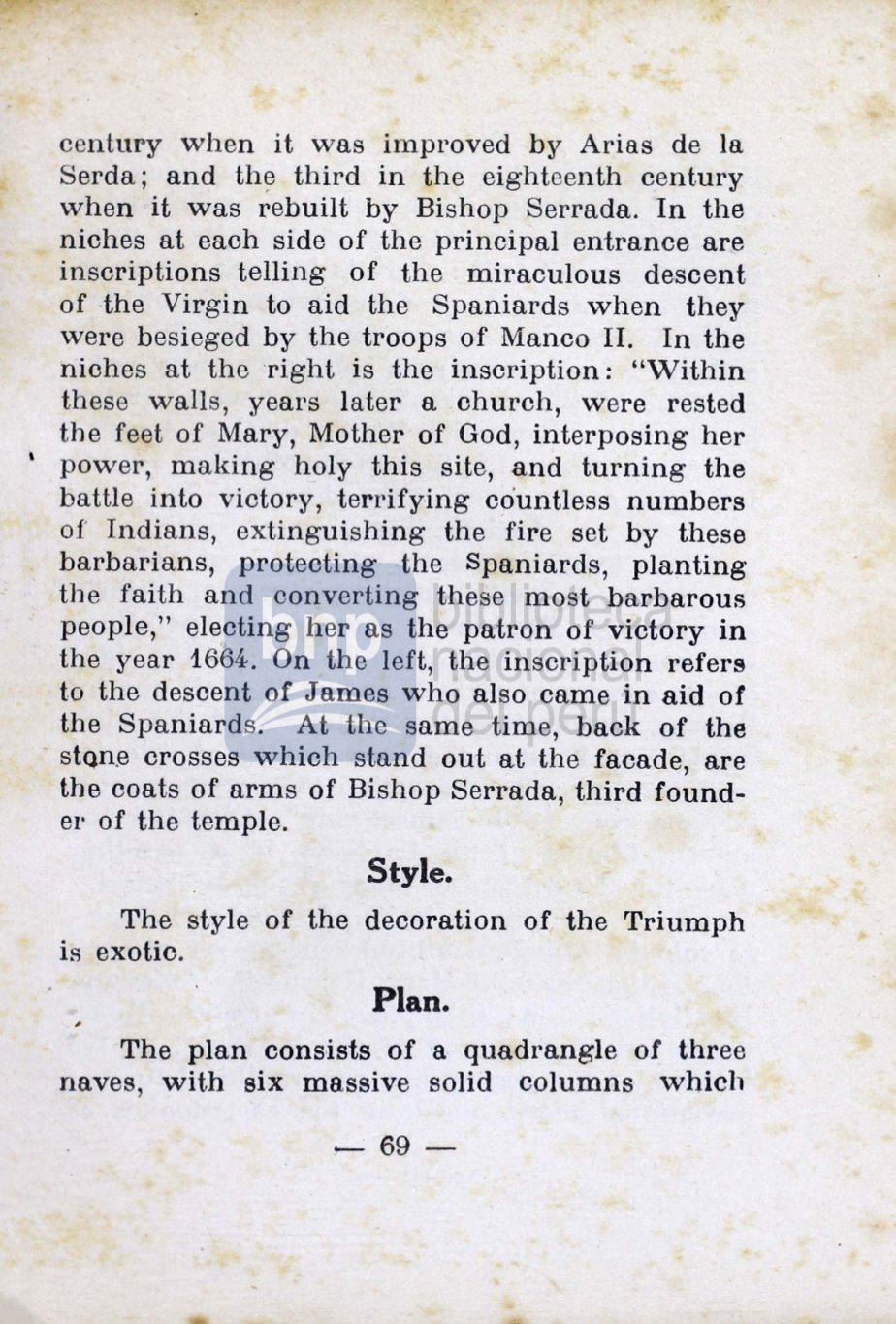

century when it was improved by Arias de la
Serda; and
th~
third in the eighteenth century
when it was rebuilt by Bishop Serrada. In the
niches at each side of the principal entrance are
inscriptions telling of the miraculous descent
of the Virgin to aid the Spaniards when they
were besieged by the troops of Manco II.
In the
niches at the ·right is the inscription: "Within
these walls, years later a church, were rested
the feet of Mary, Mother of God, interposing her
' power, making holy this site, and turning the
battle into victory, terrifying countless numbers
of Indians, extinguishing the fire set by these
barbarians, protecting the Spaniards, planting
the
f
aith and converting these most barbarous
people," electi
:g
he a
he patron of victory in
the year 1664. On tn
left, the insc iption refers
to the descent of James who also carne 1n aid of
the Spaniards. At the same time, back of the
stQn.e crosses which stand out at the facade, are
the coats of arms of Bishop Serrada, third
f
ound–
er of the temple.
Style.
The style of the decoration of the Triumph
is exotic.
Plan.
;
The plan consists of a quadrangle of three
naves, with six massive solid columns which
-69-
















